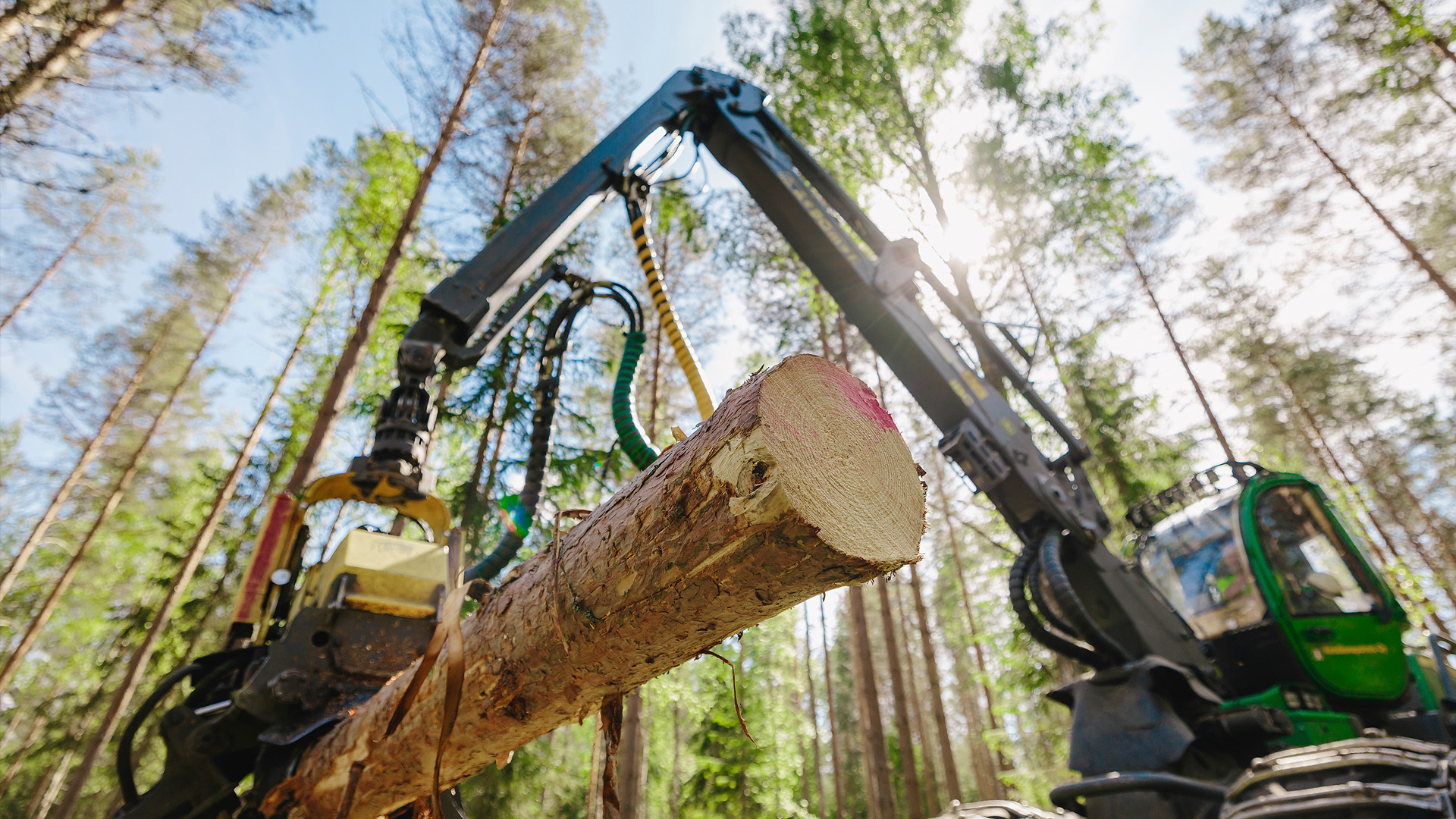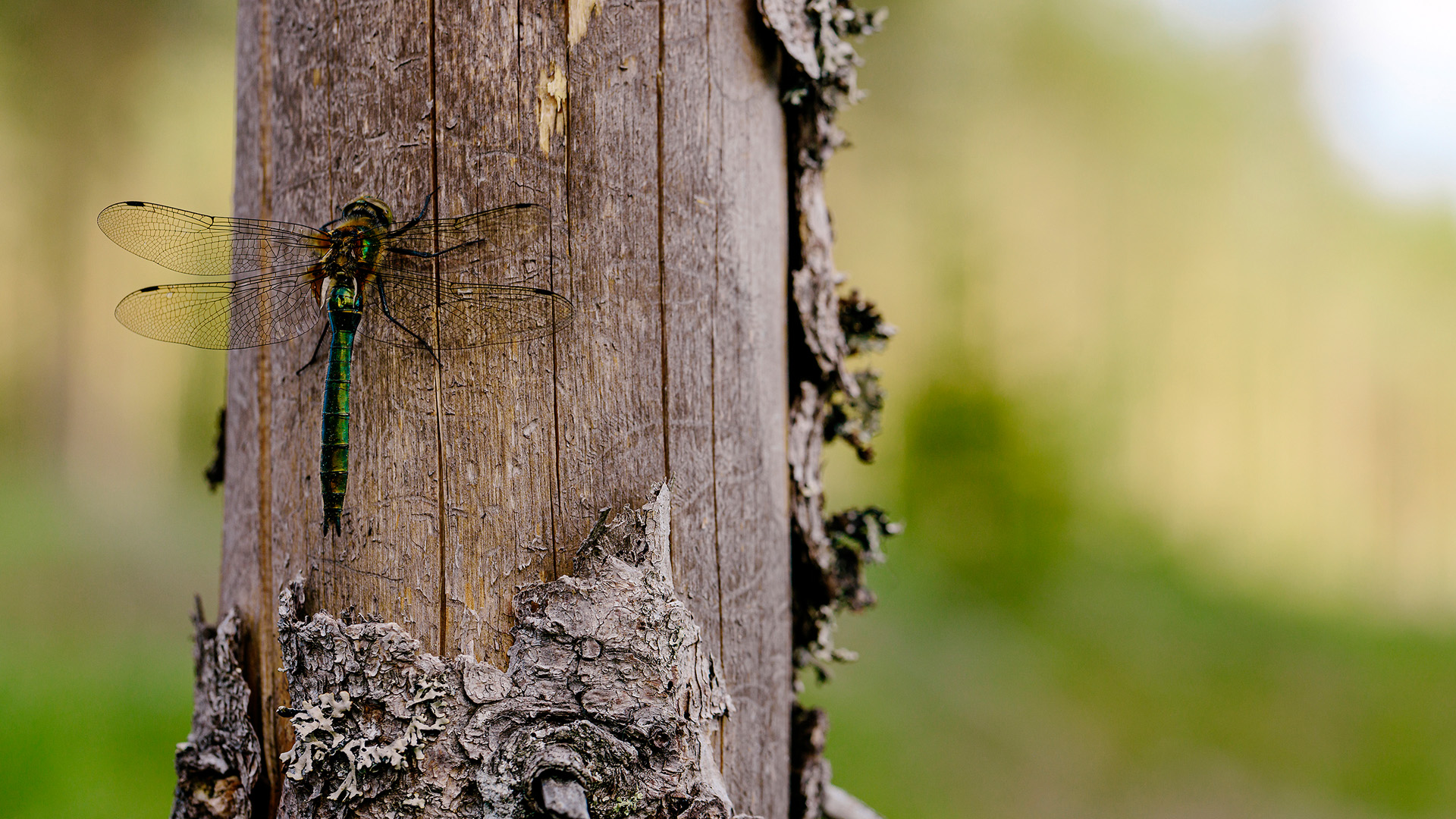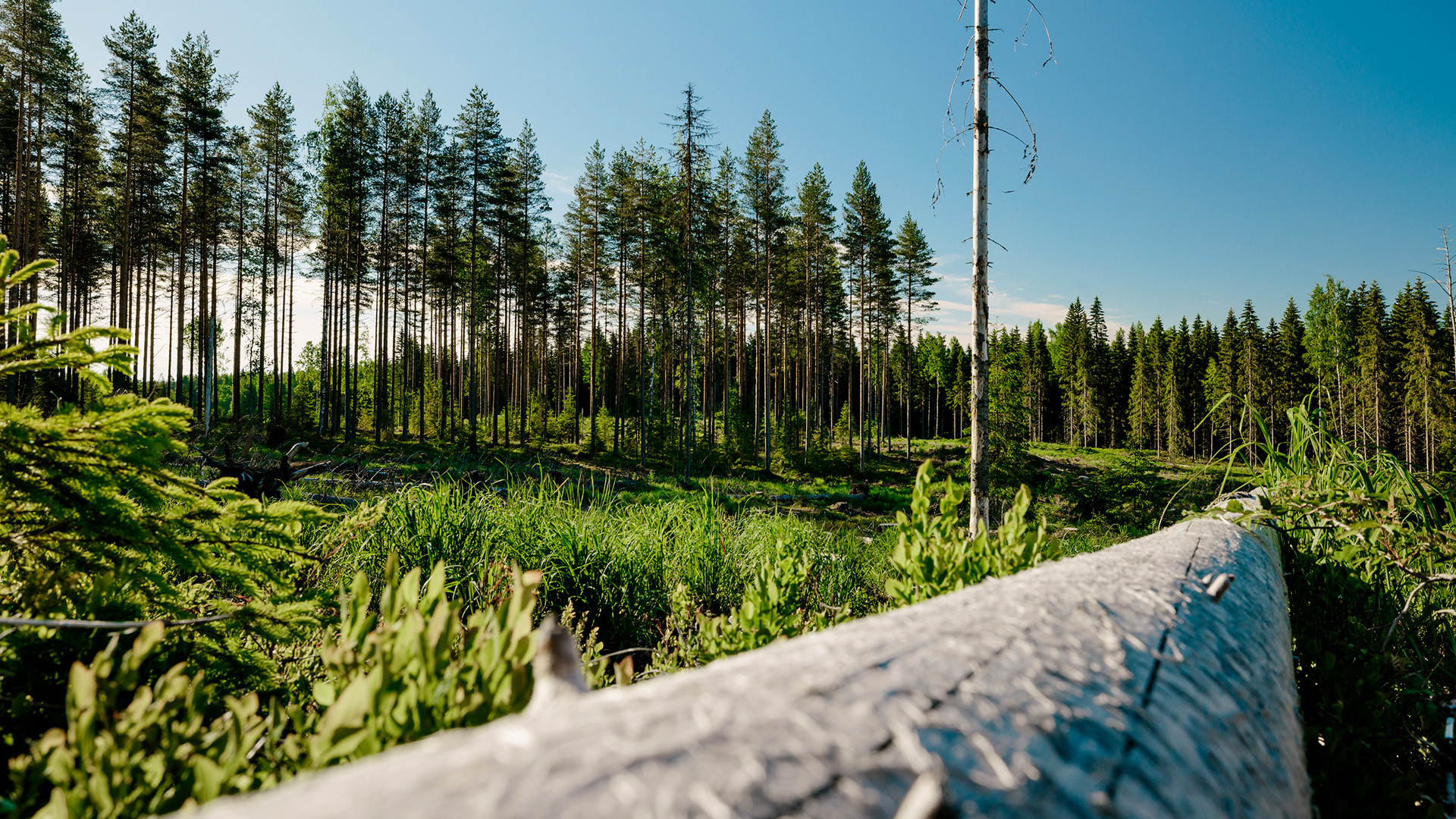Coniferous forests blanket vast territories in countries like Finland, Sweden, Canada and the United States. Canada and the US account for over 15% of the world's forests. Finland and Sweden both have forest coverage over 70%, making them the most heavily forested countries in Europe.
The forestry sector balances seemingly conflicting pressures. On the one hand, forests act as vital carbon sinks, absorbing carbon dioxide. They are indispensable in the green transition, serving as sources for biofuels and materials to replace fossil-based plastics. Innovations for textiles and the medical industry also originate from forests. On the other hand, global economic growth – particularly in developing countries – population growth, and urbanisation have spurred global demand for forest industry products.
The challenge lies in protecting the forests for the health of people and our planet while utilising trees as a renewable material source. How are these two objectives reconciled?
Antti Asikainen is the Executive Vice President of research at the Natural Resources Institute of Finland and chairman of the Finnish Forest Economy Science Panel. He emphasises the interconnectedness of climate, environment and economic issues.
"A combination of measures is needed to reach multiple objectives. We must enhance forest growth by optimising density and renewal and implementing biodiversity-enhancing measures. Both approaches are imperative to ensure a sustainable supply of industrial wood, but also to address climate and biodiversity concerns," Asikainen explains.
UPM took its first steps in the 1990s with the original biodiversity programme. The company is committed to creating a net positive impact on biodiversity in the UPM-owned Finnish forests and plantations in Uruguay by 2030. UPM is also implementing its Forest Action programme, a framework which combines forest responsibility actions and goals on climate, biodiversity, water, soil and social contribution.

Measurable success in sustainability goals
Finland is an interesting case for researchers and scientists, having gathered forest data for over a century. Statistics illustrate how diversifying tree species or incorporating retention trees and decaying wood influences the health, growth and biodiversity of forests. Overall, it is evident that a healthy, sustainably managed forest is more productive and grows faster.
At the heart of sustainable forestry in Finland lies the certification system. Since their inception in the 1990s, PEFC and FSCTM certificates have become well known among industry and forest owners and consumers. Now 90% of Finnish forests are certified, with the majority bearing the PEFC certification.
"The progress made through certification has numerous advantages," notes Elina Warsta, Senior Manager at UPM Global Forest Affairs.
"One of the most significant benefits of certification is the establishment of numerous concrete and measurable goals. We can see that our efforts to promote the wellbeing of the forests, biodiversity, and sustainability are indeed demonstrated in the results," Warsta affirms.
Sustainable forest management continues beyond certificates, notes Sami Oksa, Director of Stakeholder Relations at UPM Forest and UPM Timber.
"We have been involved in several pilot projects at UPM to understand better how different actions impact the forest. It is already understood that increasing the number of broad-leaved trees in a forest diversifies species and boosts forest growth. Specific insects and fungi thrive from leaving deadwood in the forests," Oksa lists.
UPM is collaborating with the Natural Resources Institute Finland to develop more specific ways to measure forest biodiversity. The company has also set a target to double the number of broad-leaved trees in its forests in Finland, aided by UPM's nursery in Joroinen.

Varying forestry practices between countries
Canada's vast boreal forests make it a global forestry powerhouse. Forests cover 40% of the country – approximately 347 million hectares. The forest sector is a significant contributor to the country's GDP. The primary distinction from other conifer-rich countries in Northern Europe is that most forests in Canada are state-owned, and the state grants harvesting and renting rights to private companies. Besides working as a summer intern in Canada, Antti Asikainen has also visited various forest locations in the country since the 1980s.
"Their approach is very different. Thinning is almost non-existent practice in many areas and a larger share of the forests are under public ownership. The scale and impact of natural disturbances on forest dynamics is much larger than in the Nordic countries. This leads, for instance, to reduced forest growth and a decrease of carbon sinks," Asikainen points out.
The majority of trees in Canada are coniferous, with less than 30% being mixed forests with broad-leaved trees. This may, for example, cause the forests to be more susceptible to damage from pests. Extensive forest fires have also impacted Canada. According to 2020 statistics, fires and pests destroyed over 5% of commercial forests in the country.
Widespread fires have also affected Canada’s neighbour. The US boasts a diverse variety of forest ecosystems, with coniferous forests located in the northern parts of the country. The forest industry contributes over 5% of US GDP. In the past two decades fires have devastated vast forested areas, at worst affecting over 4 million hectares of forests. In September 2023 the US Government allocated a new USD 20 million budget for researching technologies to restore forests and prevent fires.
Like Finland, Sweden places a high priority on sustainable forestry. Actions related to forest management and laws governing the renewal of forests are similar to those in Finland, differing only in the larger scale of operations. Sweden has also successfully battled forest fires, which affected up to 2% of the country’s forests during the worst years. Recently, adding more broadleaf trees has been on the agenda in Sweden.
"Disturbances, such as fires, are an integral part of the forest's renewal cycle, but when uncontrollable they can disrupt the forest industry and its ability to source materials locally. This can lead to a decline of the entire industry, as has happened in Western Canada," Asikainen says.

Finnish model gaining interest
Forests have played a major role in Finland's economic growth. The forest industry amounts to about EUR 20 billion in the country's GDP annually. A distinctive feature in Finland is the large number of private forest owners, who possess 60% of productive forest land. The state owns 26% and private companies 9%, with the remainder belonging to other entities.
Private forest owners wield considerable autonomy in decision-making regarding their forests. However, the Ministry of Agriculture and Forestry has crafted science-based guidelines for forest management, describing the best practices to manage and utilise forests sustainably. The forest law also sets basic requirements for sustainability.
But what motivates forest owners to make decisions concerning their forests with sustainability in mind?
Statistics show that healthy forests are less vulnerable to threats such as pests or fires and grow better. In recent years the volume of trees in Finland has grown significantly, from 86 m3 to 109 m3 per hectare. And although trees are harvested at a younger age, their density has improved. The forest industry in Finland does not cause deforestation, and natural disasters affecting forests have been exceedingly rare.
Elina Warsta notes a growing interest in Finnish experiences and knowledge related to sustainable forest management.
"There is tremendous interest in the origin of wood. As part of my work I enjoy taking groups such as members of the European Parliament, our buyers or stakeholder groups to our forests to demonstrate what we do in practice. It’s eye-opening," she adds.
Diverse measures, from optimising forest density and renewal to implementing biodiversity-enhancing practices, are crucial to securing a sustainable industrial wood supply. Measurable goals and continuous development are key to enhancing biodiversity and forest wellbeing – leading to a more sustainable future.

Text: Anna Gustafsson
